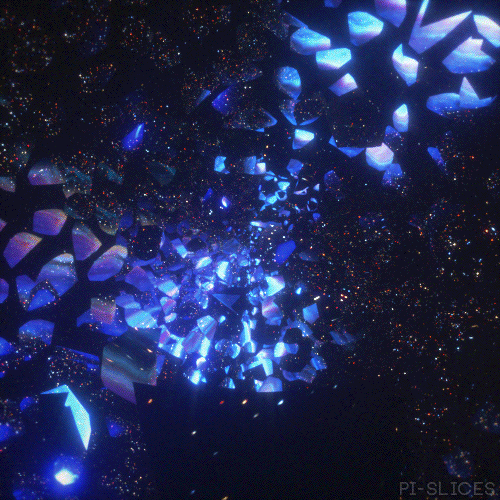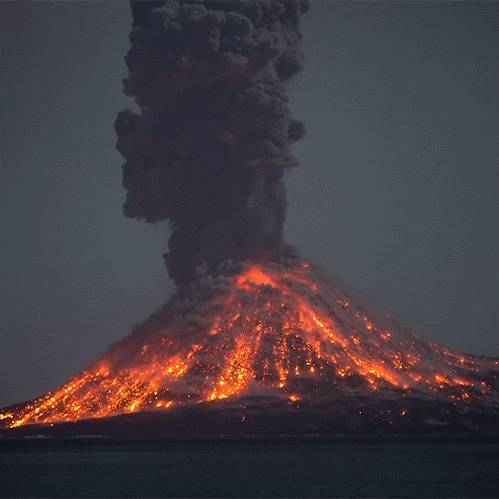Text
Love this














Ennea, Punta Zicatela, Puerto Escondido, Oaxaca, Mexico,
Arquitectura: Jaque Studio (Jesús Acosta, Carlos Enriquez)
Paisaje: Polen Paisaje
Diseño Interiores: Comité de Proyectos
56 notes
·
View notes
Text
Makes me wonder... 🤔
Recent data on the Biennale Arte 2024 and the sad figures from The Art Market Report confirm my long-held suspicions.
The biennale's algorithm is old, wrong for the AI era, and broken.
#BiennaleArte2024
2 notes
·
View notes
Text
Wayyyyy Cool... 👍
The Artemis I Mission: To the Moon and Back
The Artemis I mission was the first integrated test of the Orion spacecraft, the Space Launch System (SLS) rocket, and Exploration Ground Systems at NASA’s Kennedy Space Center in Florida. We’ll use these deep space exploration systems on future Artemis missions to send astronauts to the Moon and prepare for our next giant leap: sending the first humans to Mars.
Take a visual journey through the mission, starting from launch, to lunar orbit, to splashdown.
Liftoff

The SLS rocket carrying the Orion spacecraft launched on Nov. 16, 2022, from Launch Complex 39B at NASA’s Kennedy Space Center in Florida. The world’s most powerful rocket performed with precision, meeting or exceeding all expectations during its debut launch on Artemis I.
"This is Your Moment"

Following the successful launch of Artemis I, Launch Director Charlie Blackwell-Thompson congratulates the launch team.
“The harder the climb, the better the view,” she said. “We showed the space coast tonight what a beautiful view it is.”
That's Us

On Orion’s first day of flight, a camera on the tip of one of Orion’s solar arrays captured this image of Earth.
Inside Orion

On the third day of the mission, Artemis I engineers activated the Callisto payload, a technology demonstration developed by Lockheed Martin, Amazon, and Cisco that tested a digital voice assistant and video conferencing capabilities in a deep space environment. In the image, Commander Moonikin Campos occupies the commander’s seat inside the spacecraft. The Moonikin is wearing an Orion Crew Survival System suit, the same spacesuit that Artemis astronauts will use during launch, entry, and other dynamic phases of their missions. Campos is also equipped with sensors that recorded acceleration and vibration data throughout the mission that will help NASA protect astronauts during Artemis II. The Moonikin was one of three “passengers” that flew aboard Orion. Two female-bodied model human torsos, called phantoms, were aboard. Zohar and Helga, named by the Israel Space Agency (ISA) and the German Aerospace Center (DLR) respectively, supported the Matroshka AstroRad Radiation Experiment (MARE), an experiment to provide data on radiation levels during lunar missions. Snoopy, wearing a mock orange spacesuit, also can be seen floating in the background. The character served as the zero-gravity indicator during the mission, providing a visual signifier that Orion is in space.
Far Side of the Moon
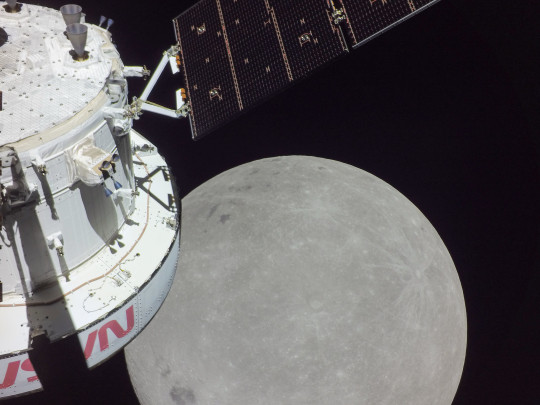
A portion of the far side of the Moon looms large in this image taken by a camera on the tip of one of Orion’s solar arrays on the sixth day of the mission.
First Close Approach

The Orion spacecraft captured some of the closest photos of the Moon from a spacecraft built for humans since the Apollo era — about 80 miles (128 km) above the lunar surface. This photo was taken using Orion’s optical navigational system, which captures black-and-white images of the Earth and Moon in different phases and distances.
Distant Retrograde Orbit
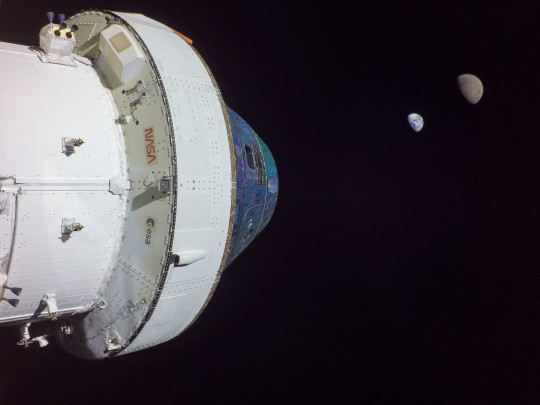
Orion entered a distant retrograde orbit around the Moon almost two weeks into the mission. The orbit is “distant” in the sense that it’s at a high altitude approximately 50,000 miles (80,467 km) from the surface of the Moon. Orion broke the record for farthest distance of a spacecraft designed to carry humans to deep space and safely return them to Earth, reaching a maximum distance of 268,563 miles (432,210 km).
Second Close Approach

On the 20th day of the mission, the spacecraft made its second and final close approach to the Moon flying 79.2 miles (127.5 km) above the lunar surface to harness the Moon’s gravity and accelerate for the journey back to Earth.
Cameras mounted on the crew module of the Orion spacecraft captured these views of the Moon’s surface before its return powered flyby burn.
Heading Home

After passing behind the far side of the Moon on Flight Day 20, Orion powered a flyby burn that lasted approximately 3 minutes and 27 seconds to head home. Shortly after the burn was complete, the Orion spacecraft captured these views of the Moon and Earth, which appears as a distant crescent.
Parachutes Deployed
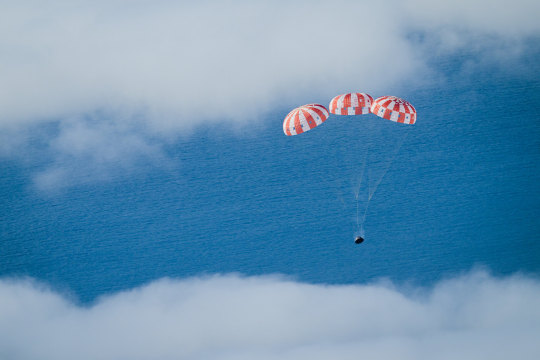
Prior to entering the Earth’s atmosphere, Orion’s crew module separated from its service module, which is the propulsive powerhouse provided by ESA (European Space Agency). During re-entry, Orion endured temperatures about half as hot as the surface of the Sun at about 5,000 degrees Fahrenheit (2,760 degrees Celsius). Within about 20 minutes, Orion slowed from nearly 25,000 mph (40,236 kph) to about 20 mph (32 kph) for its parachute-assisted splashdown.
Splashdown

On Dec. 11, the Orion spacecraft splashed down in the Pacific Ocean off the coast of California after traveling 1.4 million miles (2.3 million km) over a total of 25.5 days in space. Teams are in the process of returning Orion to Kennedy Space Center in Florida. Once at Kennedy, teams will open the hatch and unload several payloads, including Commander Moonikin Campos, the space biology experiments, Snoopy, and the official flight kit. Next, the capsule and its heat shield will undergo testing and analysis over the course of several months.
Make sure to follow us on Tumblr for your regular dose of space!
2K notes
·
View notes
Audio
Dima: Gori Yasno (Burn Сlear) by Deep Mix Radio Support the opening of the Soundcloud Library: 1. Patreon: www.patreon.com/deepmix 2. Paypal: https://ift.tt/ZShDniq 3. BTC: bc1qf0zpky54p8dxxmyaymws39mr49w8mpjmgdlu6z
2 notes
·
View notes
Photo










River Flows Netherlands-based photographer Chris König shares a collection of imagery showcasing Icelandic rivers from above.
253 notes
·
View notes
Audio
Deixa a Gira Girar ( j g b _ edit) by j g b este edit não representa meu trabalho atual. https://ift.tt/nDMZ41t DROSSEL RELEASE
1 note
·
View note
Text
F...in True
Magicians and scientists are, on the face of it, poles apart. Certainly, a group of people who often dress strangely, live in a world of their own, speak a specialized language and frequently make statements that appear to be in flagrant breach of common sense have nothing in common with a group of people who often dress strangely, speak a specialized language, live in ... er ...
Terry Pratchett
The Science of Discworld
358 notes
·
View notes

























